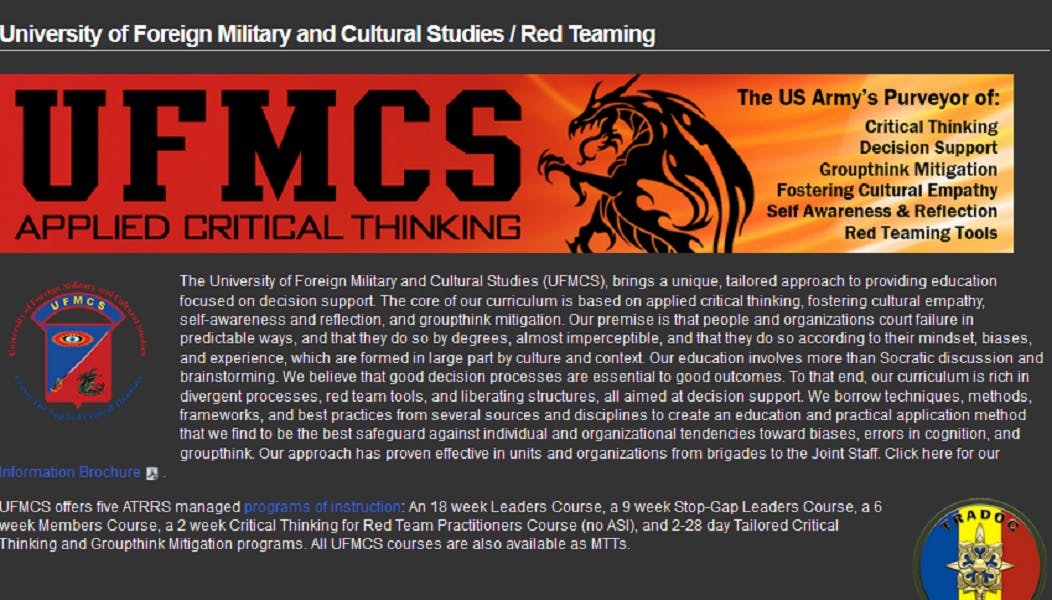General Martin Dempsey, the former chairman of the U.S. Joint Chiefs of Staff, tells a story about the day he was promoted to the Army’s highest rank back in 2008: “I had (another) four-star coming through the receiving line to congratulate me, and he leaned over and he whispered and he said, ‘You realize that, from this point forward, no one will ever tell you the truth again?’”
 How to get at the truth within your own organization is a problem leaders everywhere must contend with on daily basis, regardless of whether they come to work wearing battledress or a business suit. All too often, subordinates who find serious flaws in a strategy, plan or proposal keep their concerns to themselves — particularly if that strategy, plan or proposal came from someone higher up in the org chart. And that can have catastrophic consequences for the organizations they serve.
How to get at the truth within your own organization is a problem leaders everywhere must contend with on daily basis, regardless of whether they come to work wearing battledress or a business suit. All too often, subordinates who find serious flaws in a strategy, plan or proposal keep their concerns to themselves — particularly if that strategy, plan or proposal came from someone higher up in the org chart. And that can have catastrophic consequences for the organizations they serve.
This problem spurred the U.S. military and intelligence agencies to develop a revolutionary new approach to strategy and decision-making after 9/11 that is not only designed to get at the hard truths inside an organization, but also to stress-test that organization’s strategies and plans to make sure they really represent the best option available. They call this system “red teaming,” and it has proven so successful that it has been copied and adopted by allied militaries and intelligence agencies around the world.
I am convinced that red teaming can prove even more game-changing for businesses — so convinced that I spent the first half of 2015 becoming the first civilian from outside government to go through the U.S. Army’s Red Team Leaders course at Fort Leavenworth, Kansas. Since graduating, I have been working with companies around the world to port these ideas to business, and the results have been phenomenal!
What is red teaming?
Red teaming is a systematic way of making critical and contrarian thinking part of the strategic planning process of any organization. It is a battle-tested set of tools and processes designed to probe plans for hidden weaknesses, identify missed opportunities, and uncover unseen threats. At the same time, red teaming offers techniques to help organizations surface alternative perspectives, identify and evaluate unconsidered options, and ensure the best ideas are heard regardless of where they come from in the hierarchy.
Challenges groupthink
These are potent weapons you can use to attack groupthink and complacency head-on, before your competitors turn those weaknesses to their advantage.
Red teaming also helps companies think differently about their business and see how customers, competitors, and other key constituencies will react to moves they make in the marketplace — before they make them.
Red teaming helps organizations turn disruptive events to their advantage, stay relevant, keep ahead of their competition and cope with an increasingly uncertain world.
How red teaming works
Red teaming works by questioning the unquestionable, thinking the unthinkable and challenging everything.
By questioning the unquestionable, I mean breaking a strategy or plan down into the assumptions it is based on, then challenging those assumptions to ensure that they are really correct and likely to remain so under all circumstances. As the U.S. Department of Defense explains, “It is this aspect of deliberate challenge that distinguishes red teaming from other management tools.”
By thinking the unthinkable, I mean figuring out the different ways in which the future could unfold and the ways in which a plan could fail. That allows companies to adjust their strategies proactively to address any weaknesses before they become problems and develop contingencies to deal with events outside their control.
By challenging everything, I mean using contrarian thinking to test the organization’s fundamental understanding of the problem a strategy or plan is designed to solve and employing liberating structures such as weighted anonymous feedback to surface alternative ideas, insights and perspectives that are being held back by groupthink, internal politics or other organizational pressures.
By employing these techniques, you can help your company stress-test its strategies, make better decisions, identify unseen threats, uncover missed opportunities and become one of the disruptors in your industry, rather than one of the disrupted.
